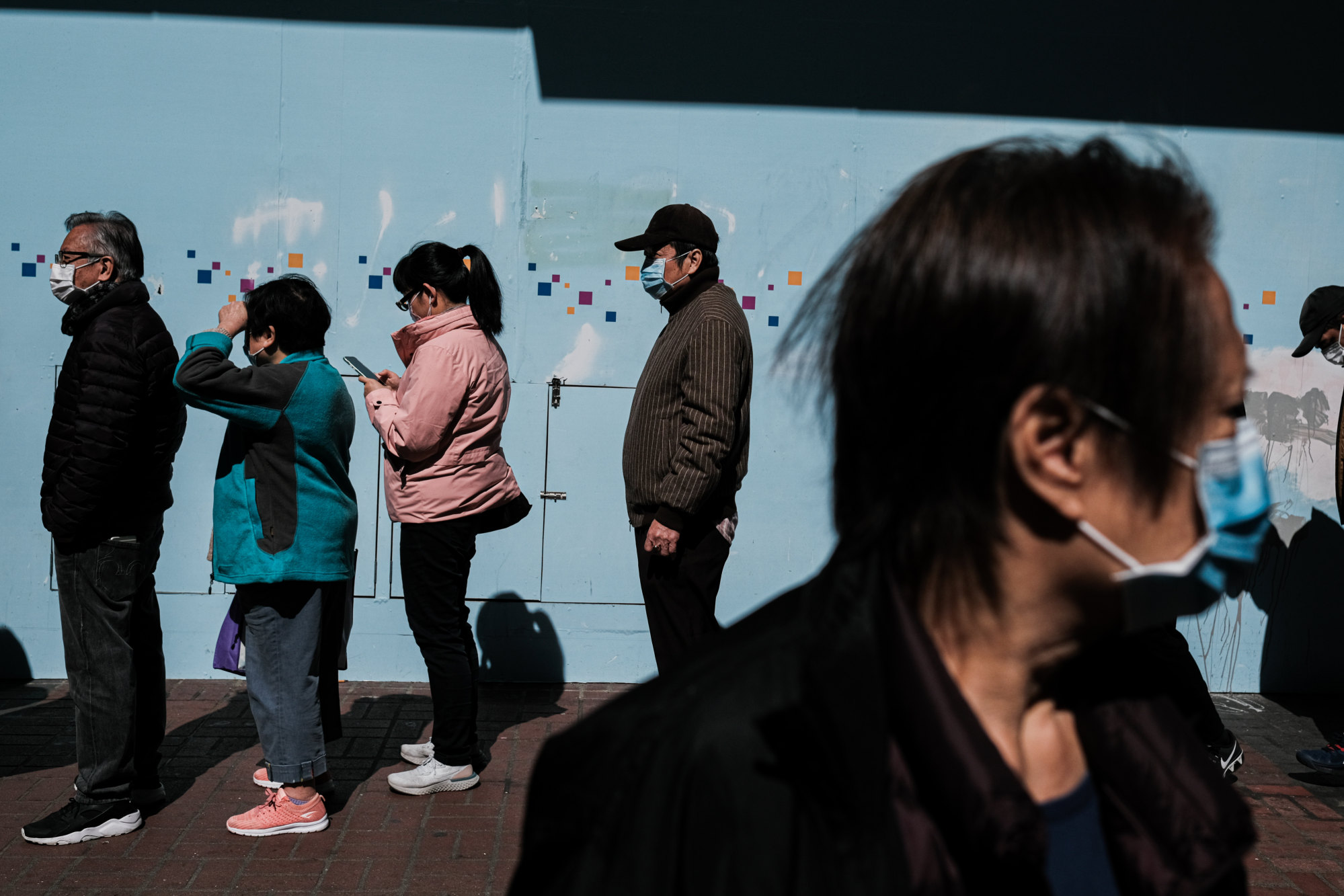
Hong Kong’s love-hate relationship with Covid-19 masks: from panic buying to lining up for limited-edition designer runs
- Residents will finally be allowed to take face coverings off in public on Wednesday, but how many will choose to ditch them?
- Not only have they become regular parts of people’s look, but wearing them reflects local value of showing care for others, one expert says
With a penchant for dressing sharply, Hongkonger Berry Chan Kin-wah would sometimes choose a face mask that complemented his outfit.
The 25-year-old said he once paid HK$200 (US$25) for 24 face coverings sold exclusively at concerts by the city’s hottest boy band, Mirror, and would queue up for the latest limited-edition runs sold when fashion brands teamed up with mask manufacturers.
Hong Kong unmasked: how are residents feeling about showing their faces?
“I think it has kind of become a fashion item given that even celebrities have been selling their own masks as concert merchandise,” he said.
The degree to which masks have become ubiquitous – and even morphed into a much-talked-about item among trendsetters – in Hong Kong stands in stark contrast with the panic Covid-19 sowed when it emerged at the start of 2020.

More than 900 days after the mask mandate was introduced, Chief Executive John Lee Ka-chiu announced on Tuesday that Hong Kong would the following day join the rest of the world in ditching the rule.
As waves of cases came and went, stores specialising in masks steadily sprang up across neighbourhoods, offering an array of types, colours and patterns. Ones featuring popular cartoon characters offered children at least a little bright spot in what was otherwise a difficult regime for them to follow properly.
While some residents opted for environmentally friendly ones that could be washed and reused, others stuck with buying disposal ones. Hong Kong has consumed 8.6 billion masks since the start of the pandemic, environmental group Greeners Action on Tuesday said. Any remaining ones they did not plan to use should be donated to care homes for the elderly, they suggested.
Social worker Sze Lai-shan, deputy director of the Society for Community Organisation (SoCO), recalled the ordeal that some of the city’s most disadvantaged faced when Covid-19 first hit Hong Kong.
Faced with a mysterious deadly virus, residents formed long queues outside almost every pharmacy store, in a bid to secure supplies. Residents travelling overseas would sometimes snap up too many boxes, leading countries such as Japan to impose a quota.
“You couldn’t get hold of them at the time even if you had money,” Sze recalled, saying the panic buying pushed the price of a single box to hundreds of dollars, far beyond what the poorest could easily afford.
“Those who live alone had to rely on others to get him or her necessities, while families would designate one person to ration the face masks,” she said.
Her organisation turned to business groups to source face masks from mainland China or countries to distribute them to residents in need.
“Even then, we could give each family five to 10 face masks each time,” she said.
Are Hong Kong’s mask makers doomed? Businesses consider closing after rule ends
Two months before the mask mandate was introduced, the government gave out the CuMask, a reusable cloth mask, an item the administration at the time viewed as a short-term fix for the shortage while it tried to boost manufacturing capacity and find fresh suppliers. Eventually prices began to drop as more boxes arrived on shelves.
Hongkongers also proved to be far more willing to comply with the rule than citizens in Western countries, a willingness that some experts attributed to the city’s past experience in battling severe acute respiratory syndrome, or Sars, in 2003.
Associate Professor Emma Buchtel, who studies cultural psychology at the Education University of Hong Kong, also pointed to a study she and her colleagues conducted in 2021 that found residents were more likely than their American counterparts to say that wearing surgical masks showed one cared about other people.
Local participants would also less likely say wearing a mask “was a signal of weakness or being controlled by other people”, she said.
Based on that research, she predicted some Hong Kong people would continue to wear masks going forward.
“In Hong Kong, wearing a mask when you’re sick is generally perceived as virtuous – caring and responsible, respectful of others,” she said. “As long as wearing a mask is seen as a sign that you care about other people, it’s likely that mask-wearing will persist even when the government does not mandate it.”

But will residents keep the coverings on just for how they look?
“I think this is a question yet to be answered,” said Buchtel, who noted that despite the plethora of options, some people still went with plain white masks.
She also said her survey also found respondents perceived a plain blue surgical mask as more virtuous and acceptable as a daily choice than a reusable grey or neutral-coloured mask.
“I suspect that making a face mask into a fashion statement might act against its purpose as a virtue signaller: that you’re wearing a mask to help other people – for others’ sake and to be responsible, not only to look nice,” she said.
Chan, who matches his mask with his outfit, said looking trendy would not be his primary consideration in deciding whether to don the covering for the day.
He said he would continue to wear a mask, especially when he is having a cold or feeling symptoms.
“And during those times when I am wearing my masks, I’ll match them with my outfit,” he said.

